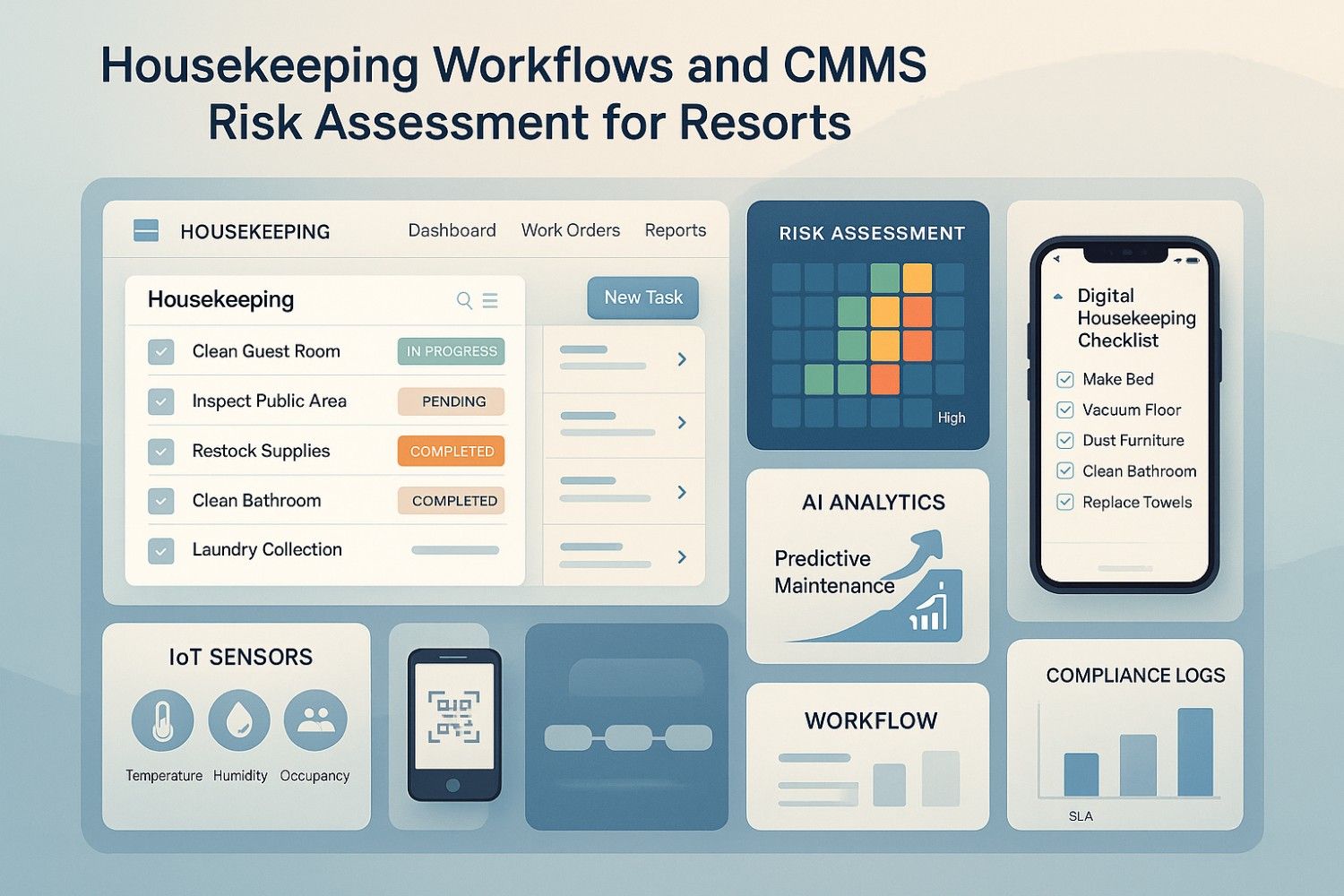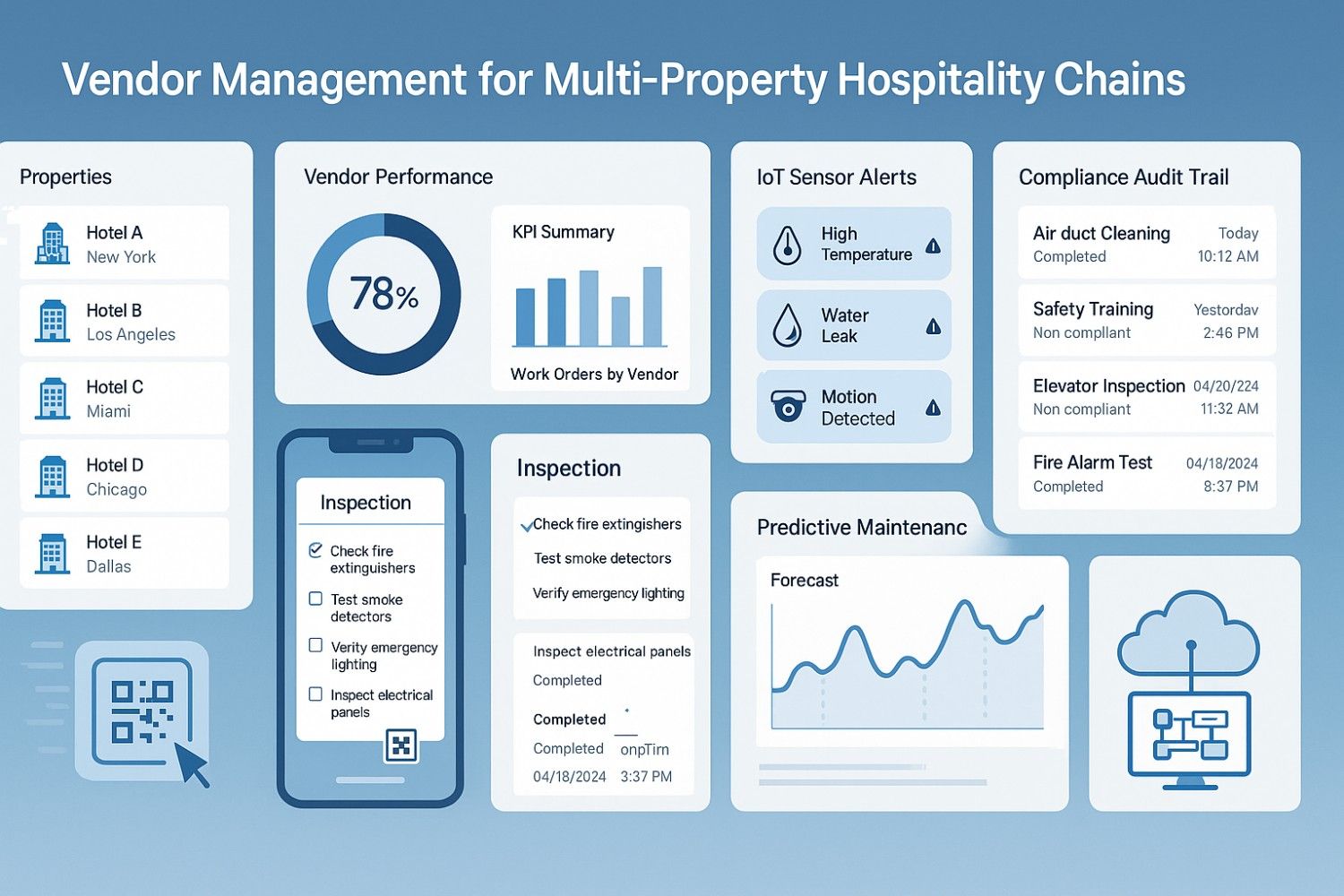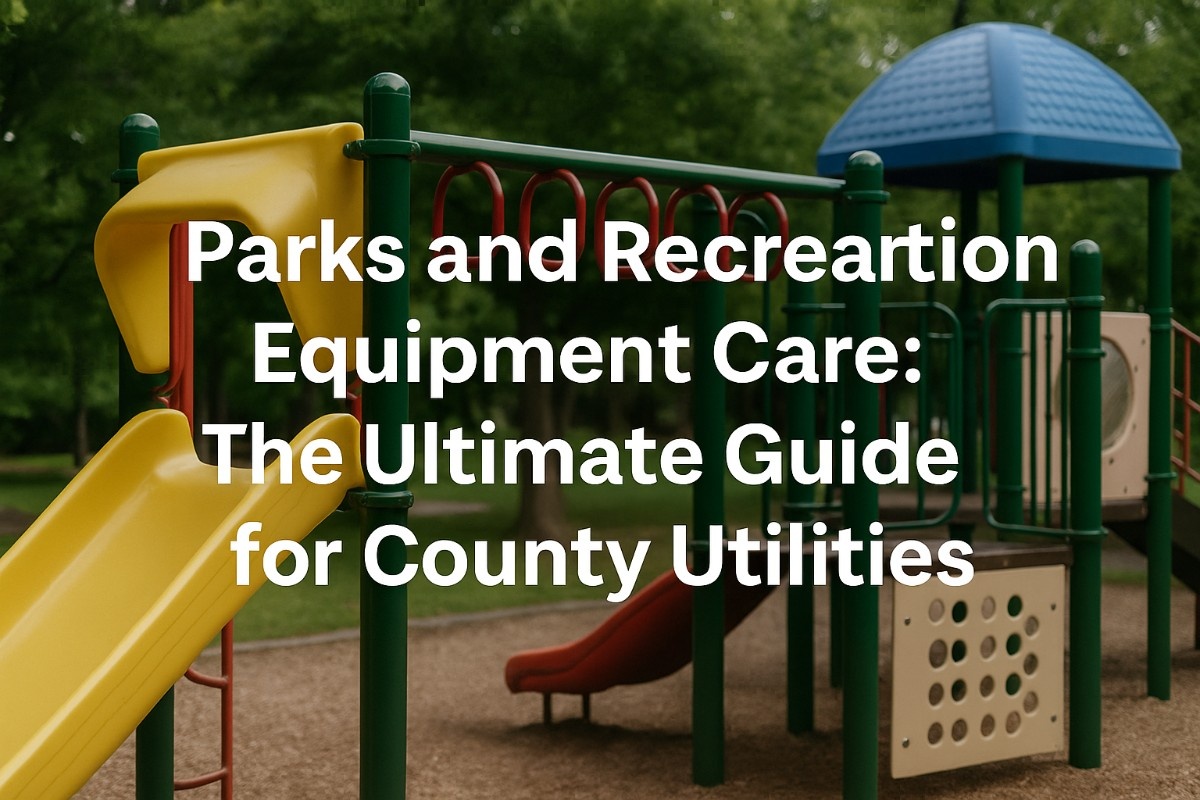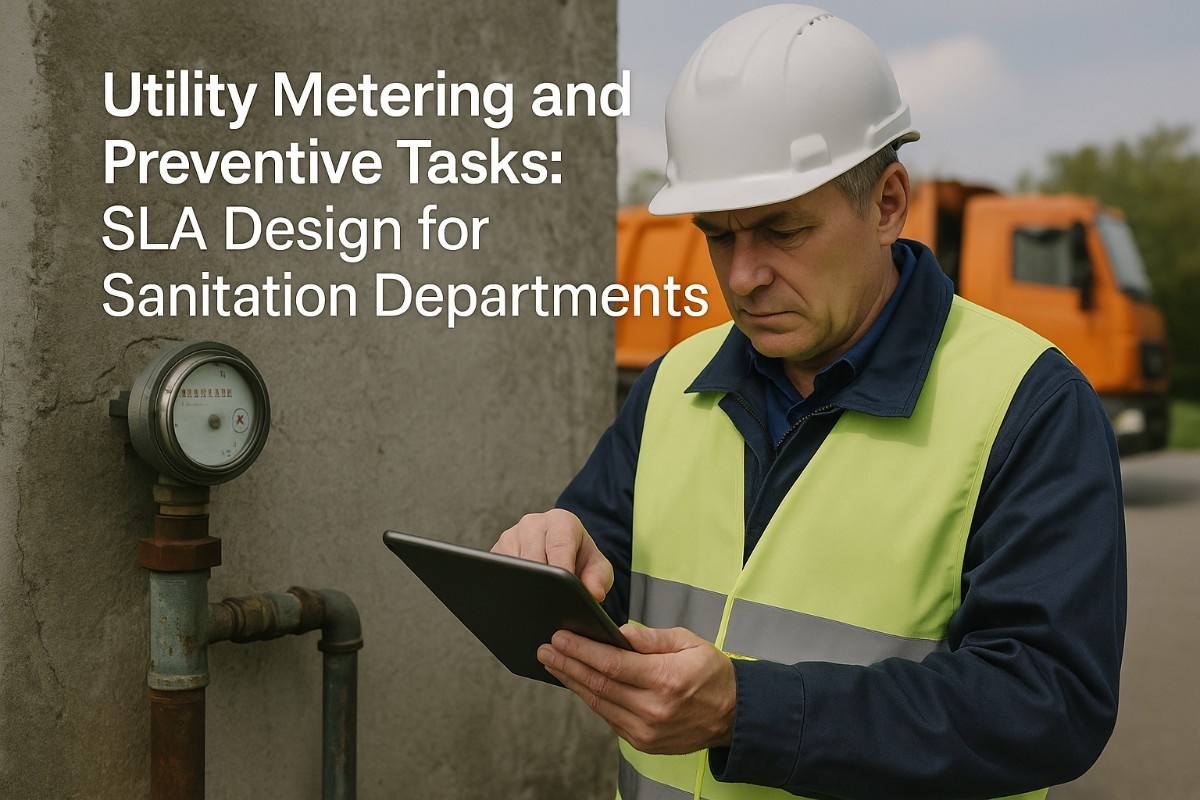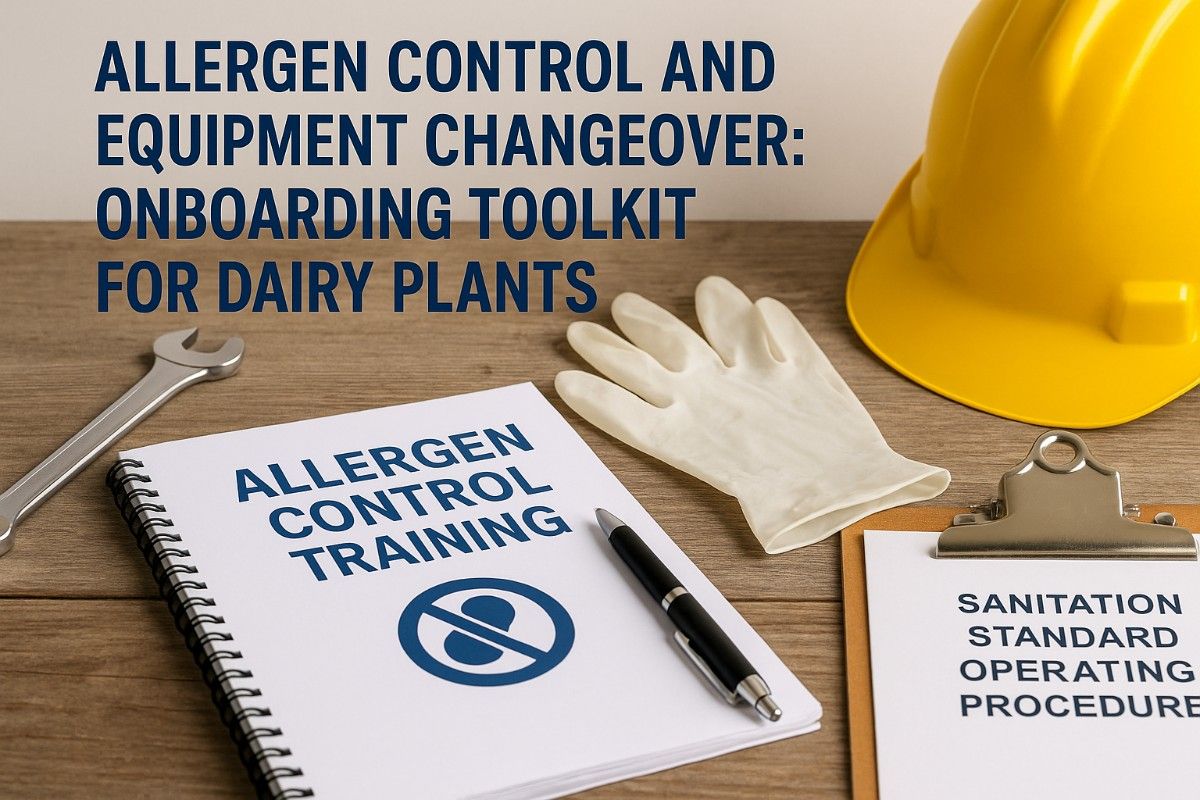Your maintenance manager walks into the quarterly review with a concerning report: "We're tracking maintenance on 47 different spreadsheets, our downtime increased 23% last quarter, and we have no visibility into which assets are draining our budget." You realize your current maintenance approach is costing $340,000 annually in inefficiencies, but selecting the wrong CMMS could waste even more resources. Without a systematic approach to choose CMMS software, you are essentially gambling with your operation's future productivity and profitability.
This scenario unfolds in manufacturing facilities nationwide as operations struggle to modernize maintenance management while avoiding costly implementation failures. The average manufacturing facility now evaluates 12-15 CMMS options before making a decision, but success rates vary dramatically based on selection criteria, vendor evaluation and organizational readiness assessment.
Organizations with strategic CMMS selection processes achieve 40-60% improvements in maintenance efficiency while reducing total maintenance costs by 25-35% compared to those using basic feature comparisons or price-driven decisions. The key lies in understanding your specific operational requirements, evaluating vendor capabilities systematically and ensuring organizational alignment before implementation begins.
Transform Your Maintenance Operations Today!
Don't let outdated maintenance practices continue costing you thousands. Join forward-thinking manufacturers who've already streamlined their operations with the right CMMS solution.
Start Your Free TrialSchedule Expert Consultation
Understanding CMMS Requirements and Business Objectives
Effective CMMS selection begins with comprehensive requirements analysis that extends far beyond basic maintenance scheduling. Your chosen maintenance software must align with operational workflows, integrate with existing systems, and support both current needs and future growth objectives without creating additional complexity.
Business objective alignment represents the foundation of successful CMMS implementations. Organizations achieving superior results define specific, measurable goals before evaluating vendors, ensuring selected systems deliver quantifiable value rather than simply digitizing existing inefficient processes.
Asset Management Depth
Comprehensive asset tracking including specifications, maintenance history, warranty information, and performance analytics. Essential for organizations managing diverse equipment portfolios requiring detailed documentation.
Work Order Capabilities
Flexible work order creation, assignment, tracking, and completion with mobile accessibility. Must support both planned maintenance and emergency repair workflows seamlessly.
Preventive Maintenance
Automated scheduling based on time, usage, or condition triggers. Advanced systems enable predictive maintenance integration and optimization recommendations.
Inventory Integration
Parts management with automatic reordering, vendor integration, and cost tracking. Critical for minimizing stockouts while controlling inventory carrying costs.
Reporting and Analytics
Real-time dashboards, customizable reports, and trend analysis enabling data-driven maintenance decisions and continuous improvement initiatives.
System Integration
Seamless connectivity with ERP, accounting, and operational systems. API availability and data exchange capabilities prevent information silos.
Scalability considerations significantly impact long-term CMMS value and total cost of ownership. Systems designed for small operations often struggle with enterprise requirements, while enterprise solutions may overwhelm smaller organizations with unnecessary complexity and costs.
Industry-specific requirements vary dramatically between manufacturing sectors. Food processing facilities need FDA compliance features, while heavy industry requires extensive safety documentation capabilities. Generic CMMS solutions rarely address specialized regulatory and operational requirements effectively.
Evaluating CMMS Features and Vendor Capabilities
Systematic vendor evaluation requires moving beyond marketing presentations to hands-on assessment of actual system capabilities, implementation approaches, and ongoing support quality. The most compelling demos often mask significant limitations that emerge during real-world usage and integration challenges.
Feature depth versus usability represents a critical balance in CMMS selection. Advanced systems offering extensive functionality may overwhelm users and require significant training investment, while simple solutions often lack capabilities needed for complex manufacturing environments.
| Evaluation Category | Essential Elements | Success Indicators | Red Flags |
|---|---|---|---|
| System Usability | Intuitive interface, mobile access, workflow logic | Minimal training required, high user adoption | Complex navigation, frequent user complaints |
| Implementation Support | Dedicated project management, data migration, training | Structured methodology, clear timelines | Generic approaches, unclear responsibilities |
| Integration Capabilities | API availability, pre-built connectors, data mapping | Seamless system connectivity, real-time sync | Manual data entry, integration limitations |
| Vendor Stability | Financial health, customer base, development roadmap | Growing user community, regular updates | Financial uncertainty, limited development |
| Support Quality | Response times, technical expertise, user resources | Quick resolution, knowledgeable staff | Slow responses, frequent escalations |
| Total Cost Impact | Licensing, implementation, training, ongoing costs | Transparent pricing, clear ROI potential | Hidden fees, escalating costs |
Cloud-based versus on-premise deployment decisions significantly impact implementation complexity, ongoing costs, and system accessibility. Cloud solutions typically offer faster deployment and lower IT overhead, while on-premise systems provide greater control and customization capabilities.
Mobile functionality has evolved from nice-to-have to essential capability for modern maintenance operations. Field technicians require full work order access, asset information, and completion capabilities from mobile devices to maximize productivity and data accuracy.
Structured Vendor Evaluation Process
Customization capabilities and limitations require careful evaluation. While extensive customization options provide flexibility, they often increase implementation complexity and upgrade difficulties. Best-practice configurations typically deliver better long-term value than heavily customized deployments.
Data migration and system integration capabilities determine implementation success and timeline. Vendors with proven migration tools and integration experience significantly reduce project risk and accelerate time-to-value compared to those requiring custom development approaches.
Implementation Planning and Organizational Readiness
Successful CMMS implementations require comprehensive planning that addresses organizational change management, data preparation, and user adoption strategies alongside technical configuration. The most advanced systems fail when organizations underestimate the cultural and process changes required for successful adoption.
Change management represents the most critical factor in CMMS success, yet receives insufficient attention in many implementations. Organizations achieving high user adoption rates invest 40-50% of implementation resources in training, communication, and process optimization rather than focusing solely on technical deployment.
Leadership Commitment
Executive sponsorship and resource allocation demonstrating organizational commitment to maintenance excellence and digital transformation
Data Quality
Clean, accurate asset information and maintenance history enabling effective system initialization and historical analysis
Process Documentation
Current workflow mapping and process standardization providing foundation for system configuration and optimization
User Engagement
Stakeholder involvement in requirements definition and solution design ensuring system meets actual operational needs
Technical Infrastructure
Adequate network capacity, device availability, and IT support capabilities supporting system performance and accessibility
Training Resources
Dedicated time and personnel for comprehensive user education and ongoing skill development programs
Phased implementation approaches significantly improve success rates and reduce organizational disruption compared to facility-wide rollouts. Starting with pilot areas enables learning incorporation and builds organizational confidence before expanding system usage.
Data preparation and cleansing efforts often determine implementation timeline and initial system value. Organizations with accurate asset databases and maintenance history achieve faster implementation and immediate analytics capabilities, while those with poor data quality require extensive preparation efforts.
Success metrics and performance measurement systems must be established before implementation begins. Clear KPIs enable progress tracking and value demonstration, while also identifying areas requiring additional focus or system optimization during deployment.
Cost Analysis and ROI Considerations
Comprehensive total cost of ownership analysis extends far beyond initial licensing fees to include implementation services, training costs, ongoing support, and system maintenance expenses. Hidden costs often add 50-100% to initial estimates, making thorough financial analysis essential for accurate budgeting.
ROI calculations for CMMS investments must quantify both direct cost savings and indirect value creation. While maintenance cost reductions provide obvious benefits, improved asset reliability, enhanced compliance, and better decision-making often deliver greater long-term value that traditional ROI models may underestimate.
CMMS Investment Components
- Software licensing representing 30-40% of total 3-year costs
- Implementation services including 25-35% for configuration and training
- Data migration and system integration requiring 15-25% of budget
- Ongoing support and maintenance consuming 20-30% annually
- User training and change management often overlooked but critical
- Hardware and infrastructure upgrades potentially required
- Internal resource allocation for project management and testing
- Productivity impact during transition period
Payback periods for well-implemented CMMS solutions typically range from 8-18 months, with leading organizations achieving ROI within 12 months through focused deployment on high-impact maintenance areas. However, payback timelines vary significantly based on current maintenance maturity and implementation scope.
Value realization patterns show that organizations achieve 30-40% of total benefits within the first 6 months through basic efficiency improvements, with remaining value accumulating over 18-24 months as users develop expertise and optimize processes.
Primary ROI Drivers
- Reduced emergency maintenance through preventive scheduling optimization
- Decreased asset downtime from improved maintenance planning and execution
- Lower inventory costs through better parts management and demand forecasting
- Enhanced labor productivity via mobile access and workflow optimization
- Improved regulatory compliance reducing fine and audit risks
- Extended asset life through optimized maintenance strategies
Financing options and vendor terms significantly impact cash flow and risk distribution. Subscription models reduce upfront investment while providing predictable ongoing costs, while perpetual licenses offer long-term cost advantages for stable organizations with adequate capital resources.
Risk mitigation through careful vendor selection, phased implementation, and comprehensive training programs protects CMMS investments and ensures value realization. Organizations implementing proven methodologies and maintaining realistic expectations achieve consistently superior results.
Conclusion
Choosing the right CMMS for your business requires systematic evaluation of operational requirements, vendor capabilities, and organizational readiness factors that extend far beyond basic feature comparisons. The most successful implementations achieve 40-60% maintenance efficiency improvements while reducing total costs by 25-35% through strategic selection processes that align technology with business objectives.
Understanding your specific maintenance requirements provides the foundation for effective CMMS selection. Comprehensive needs assessment including asset management depth, work order capabilities, integration requirements, and scalability considerations ensures chosen systems deliver measurable value rather than simply digitizing inefficient processes.
Vendor evaluation must move beyond marketing presentations to systematic assessment of actual capabilities, implementation approaches, and support quality. Organizations using structured evaluation processes achieve 75-85% implementation success rates while identifying solutions that optimize both functionality and usability for their specific operational context.
Implementation planning and organizational readiness determine long-term CMMS success regardless of technology selection quality. Change management, data preparation, and user adoption strategies require equal attention to technical configuration, with leading organizations investing 40-50% of resources in people and process optimization.
Cost analysis and ROI considerations must encompass total ownership expenses including implementation services, training, and ongoing support alongside direct licensing costs. Comprehensive financial evaluation enables accurate budgeting while supporting business case development that secures organizational commitment for successful deployment.
The 2025 CMMS landscape offers unprecedented capabilities for maintenance optimization, but success requires matching technology selection with operational requirements and organizational capabilities. Strategic selection processes that balance functionality, usability, and implementation support deliver superior results compared to price-driven or feature-focused decisions.
Ready to Revolutionize Your Maintenance Operations?
Stop losing money to inefficient maintenance practices. Thousands of manufacturers have already transformed their operations and significantly reduced costs with our proven CMMS solution. Your competition isn't waiting – why should you?
Begin Your TransformationGet Expert Strategy Session

